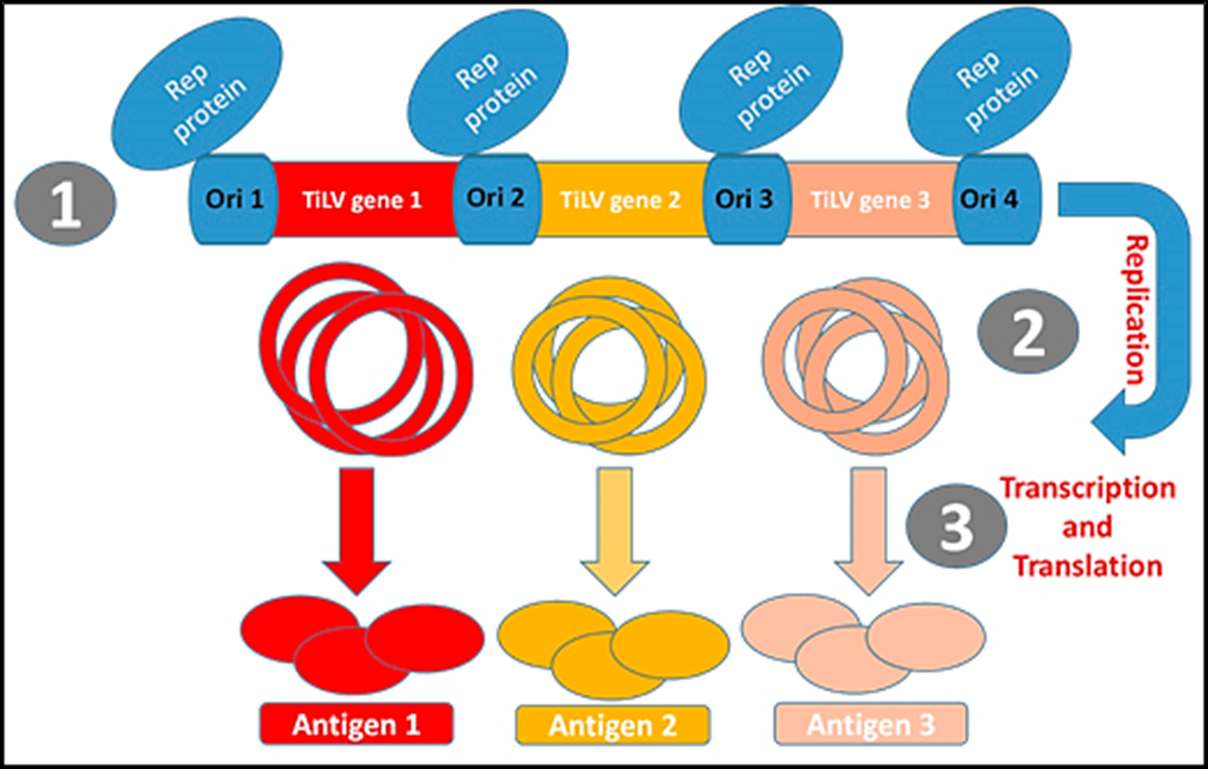In 2009, the emergency of a disease capable of causing up to 90 percent mortality in Tilapia fish population was reported in Israel. Later on, in 2014, an enveloped RNA virus denominated Tilapia Lake Virus (TiLV) was associated as the etiological agent (Eyngor et al., 2014). Recently, two different groups published the genomic sequences for TiLV (Al-Hussinee et al., 2018; Bacharach, et al., 2016). Al-Hussinee et al., (2018) reported that the TiLV is genetically conformed by 10 segments of RNA in negative sense. Sequence similarity analyses showed that segment 1 codifies for the RNA polymerase enzyme, while the rest of the RNA segments are codifing for hypothetical proteins without similarities to previously reported proteins, and consequently they have unknown functions. Considering that the virus has spread worldwide since its emergence (Al-Hussinee et al., 2018), it is compulsory to establish prevention measures in at least two ways: (1) in terms of hygiene and fish-crop management, and (2) vaccination against the TiLV infection. Vaccination approach could consider genomic sequences of TiLV reported by Al-Hussinee et al., (2018). Genes for hypothetical TiLV proteins that show similarity with other viral proteins with known immunogenic properties could be heterologously expressed in microalgae to evaluate their potential as antigens to be used in an oral vaccination strategy. Considering our previous report about the use of viral elements for recombinant protein production in microalgae (Bañuelos-Henández et al., 2017), we propose here the development of a geminivirus viral vector for microalgae to allow the cloning of two or three TiLV genes in a single vector. The vector is then use to produce sufficient quantity of recombinant proteins for the vaccination strategy (Fig. 1). TiLV is related to Orthomyxoviruses (Bacharach et al., 2016) as is the influenza virus. In influenza virus, the longer proteins (HA, NA, and M1) are main immunogenic antigens (Moon et al., 2019; Dukhovlinov et al., 2013; Yamashita et al., 2010). Based on that information, it could be inferred that the KU751815, KU751816, KU751817, KU751818, KU751819 genes in TiLV may code the homologous immunogenic proteins (HA, NA, and M1).

Fig. 1 Schematic representation and functionality of the multigene viral vector for microalgae transformation. 1) Once time viral vector will integrated into the microalgae genome, each one of the TiLV genes (TiLV gene 1-3) will be released by the catalytic action of Rep protein once it bind the replication origins (Ori 1-4), 2) after release, each circular genomic molecules will replicate indepedientelly through rolling circle replication mechanism, 3) high copy number of TiLV genes will produce high quantity of recombinant proteins in microalgae.
Oral inoculation of microalgae producing two or three TiLV antigens is expected to generate protective immunogenicity in the vaccinated fish. On the other hand, antigen bio-encapsulation in the algae cells could improve antigens preservation through the gastrointestinal tract to increase its absorption in small intestine for better bioavailability (Gregory et al., 2013). Recently, the bioabsorption of recombinant protein was evaluated in fish using transgenic microalgae (Chlamydomonas rehinhardtii) as a fish feed (Kwon et al., 2019). Microalgae could be considered a good option for antigens production in oral vaccination schemes because tilapia naturally fed microalgae and vegetable detritus; and because the microalgae can be used as an additive in commercial diets (Tesfahun and Temesgen, 2018; Bhujel, 2013; Bowen, 1982). Hypothetically, a 3g fry could ingest 450mg of microalgae containing approximately 250 micrograms of antigen (considering the lowest level of recombinant protein yield using the Algevir system, Bañuelos-Hernández et al., 2017).
In conclusion, the availability of public TiLCV genomic sequences and the development of a geminiviral vectors for production of TiLV recombinant proteins in microalgae could contribute to the development of a successful oral vaccine against the TiLV virus.











 nueva página del texto (beta)
nueva página del texto (beta)


